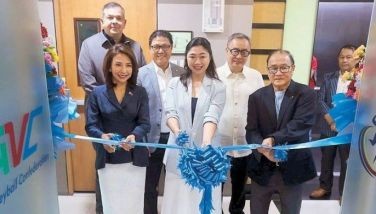RORO transport

The Philippine archipelago has been described as a jigsaw puzzle made up of more than 7,000 islands that must be pieced together through a nationwide road-nautical highway system. Without this system, people will continue to travel and transport goods from one island to another in a time-consuming, laborious, and costly manner.
Thanks to President Arroyo’s issuance of Executive Order 170 promoting private sector investment in the Road-RORO Terminal System (RRTS) on
This columnist first heard about the RORO from President Arroyo herself, on board the presidential plane that took us to
Two weeks ago, a familiarization tour of the administration’s infrastructure projects in
The main concept behind the Road-RORO Terminal System is the “integration of the various islands through a seamless system of land and sea transport that forms part of the national highway network.”
Enrico Basilio, director of the CRC’s transport and logistics institute, said the objectives of the RRTS are to reduce transport cost of goods from
RORO simply means roll-on, roll-off. This is a graphic description of the system that allows trucks carrying all sorts of goods to roll up (or drive up) to the platforms of inter-island vessels and roll down the platforms upon reaching designated ports and drive off to designated drop-off points (warehouses, distribution points or public markets).
Since the trucks carrying say, rice, corn, bananas or vegetables are already loaded at their points of origin, no handling fees are charged upon the rolling on and off of the RORO vessels. This system of no-cargo handling has meant substantial savings for transporters or owners of goods being shipped as opposed to the traditional shipping method which slap charges for cargo handling by kargadors.
Enrico showed us examples of transport cost reductions. Under the traditional shipping system using cargo handlers a truckload of fresh fruit would be charged P20,000 for transport cost, as opposed to the RORO shipping cost of P14,000 (this means savings of P6,000 under the RORO system). For electronic goods (semi-conductors), the traditional charge is P26,000, and the RORO charge is P14,000 (savings of P12,000); for motorcycles, the traditional transport charge of P95,000, is reduced to P50,000 (savings of P45,000). As for passengers, the fare is reduced by P150 per head to P70.
This “new business” philosophy, according to Enrico’s report on the RORO, results in “door to door” delivery, nationwide coverage (to any point in the Philippines), faster and more efficient delivery of goods (from perishables to fertilizers).
The Road-RORO Terminal System is an integral part of the Strong Republic Nautical Highway network. This means that travel is made by land and sea. Bus companies unload passengers at RORO terminals and passengers continue their journey by sea, taking RORO vessels from
Basilio said Nestle
RRTS terminals, said Basilio, serve as “area development” catalysts. He cited developments in
Several vessels operate under the RORO highway system, among them those belonging to Trans-Asia Shipping Lines, Inc., the Montenegro Shipping Lines, Inc., and
Traveling by the RORO travel system can be fun. Try it.
* * *
The University of the Philippines High School Class of 1957, led by president for life Ernie Marcelo, will celebrate their 50th anniversary in the forthcoming annual homecoming of the UP
Class ’57 members will be honorees in this year’s UPIS homecoming entitled “Ginto’t Pilak Namumulaklak, Humahalakhak!” to be hosted by the Silver Jubilarians Class of ’82, led by Ada Abad. All alumni of UP High, UP Elementary, UP Prep and UPIS are expected to attend and make the event a roaring success.
When Class ’57 marked their silver jubilee in 1982, they donated the terrazzo tables and benches that are still in use today. This time they are donating computers and printers, and offering gifts of love to their surviving mentors. They also completed a Golden Edition of The Clarion, an update of the school annual, which will be available together with a replica of The Oblation to commemorate their milestone.
Prior to the official homecoming, Class ’57 has scheduled a number of activities especially for their balikbayan classmates. This includes an overnight stay in Sonya’s Secret Garden Bed & Breakfast. Another Class ’57 tradition is to welcome all classmates from 1953 to 57. Contact Fritzi for details at 9310056.
* * *
My email: [email protected]
- Latest
- Trending





























